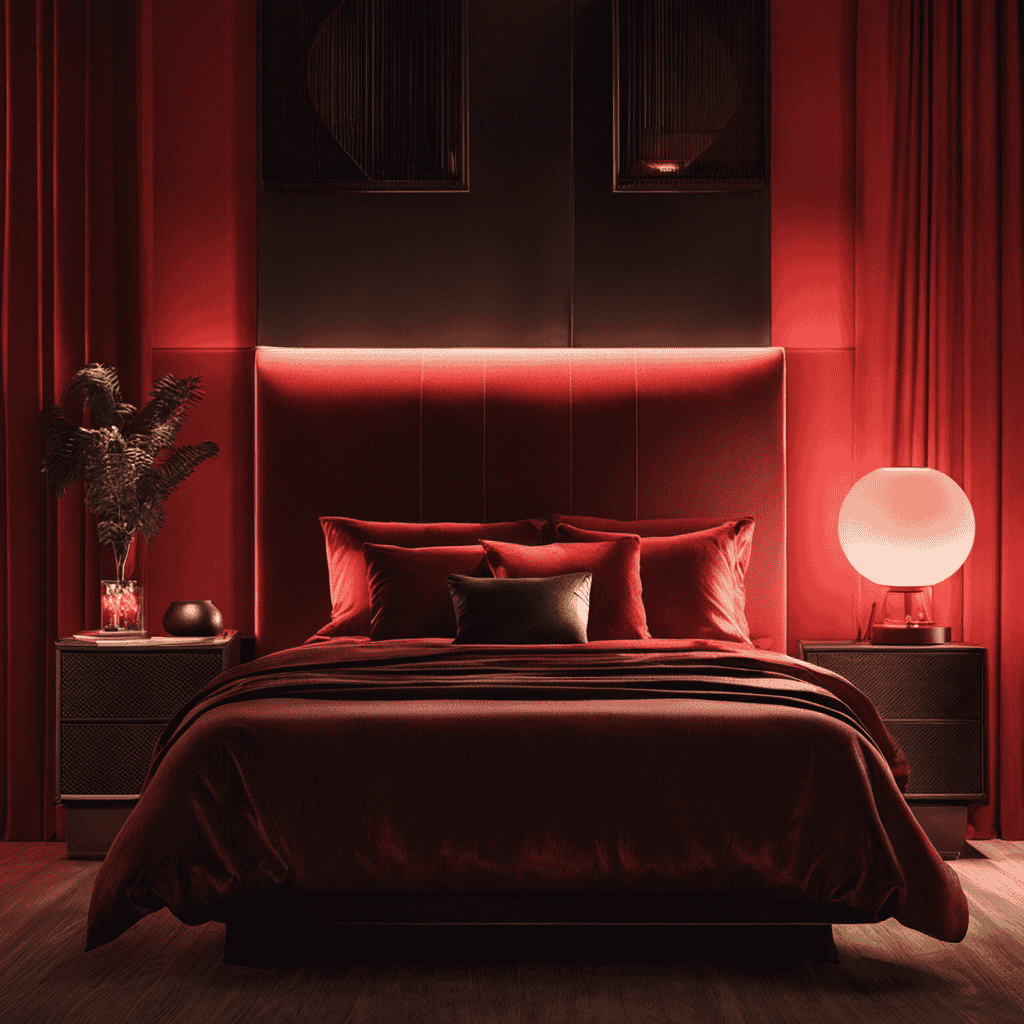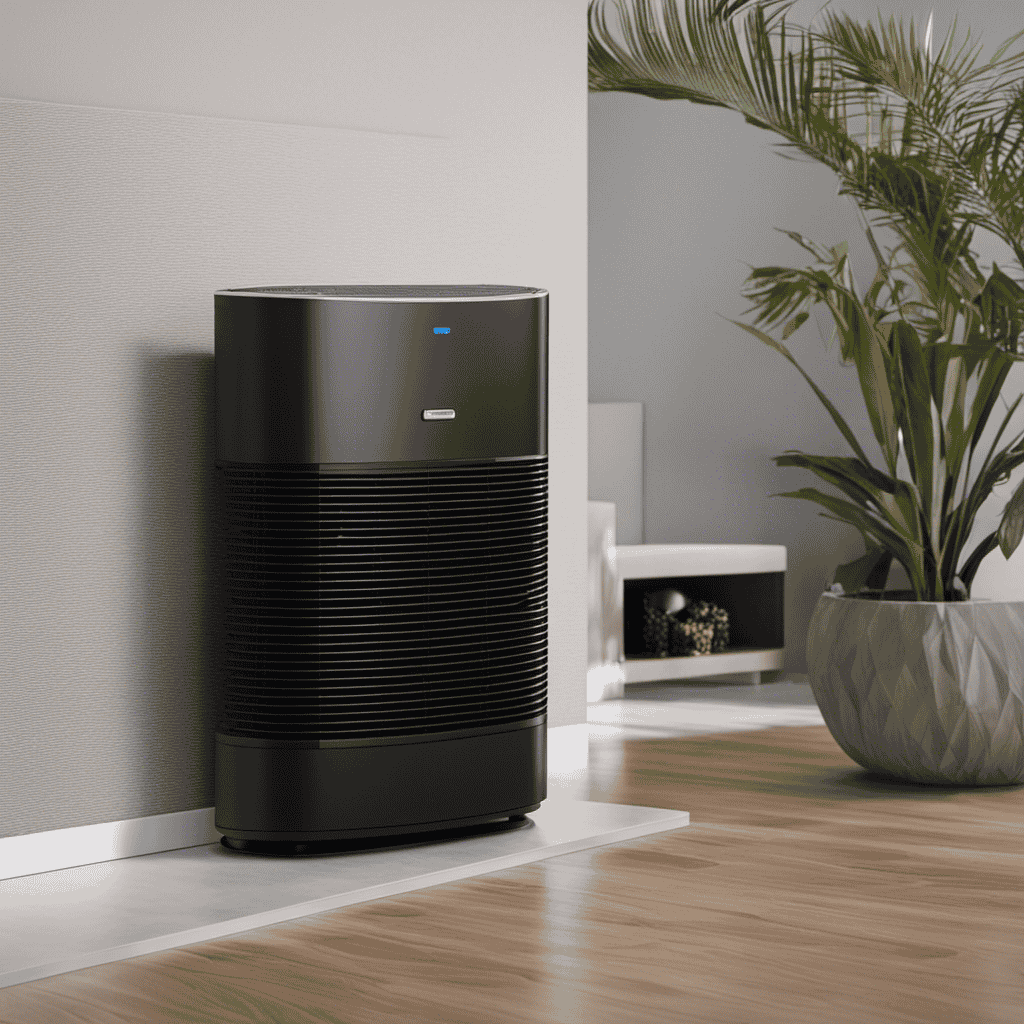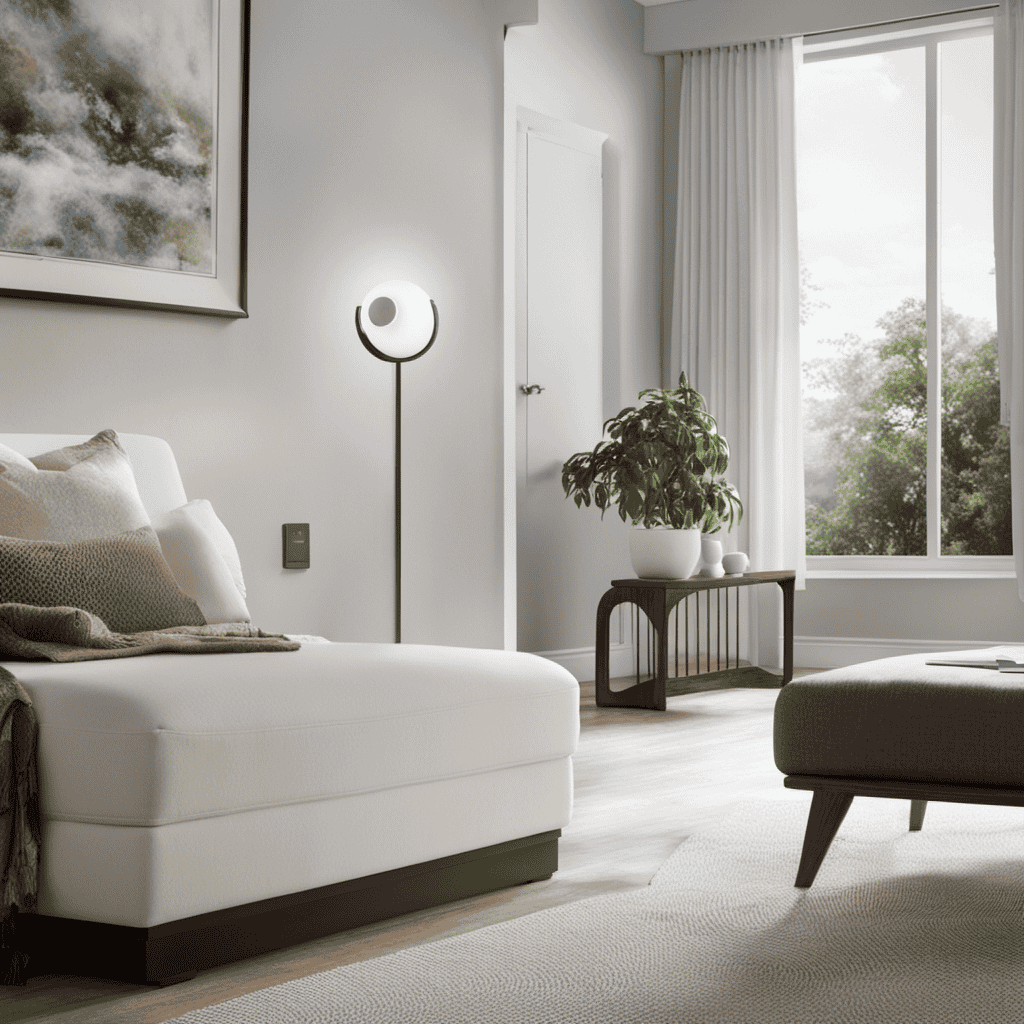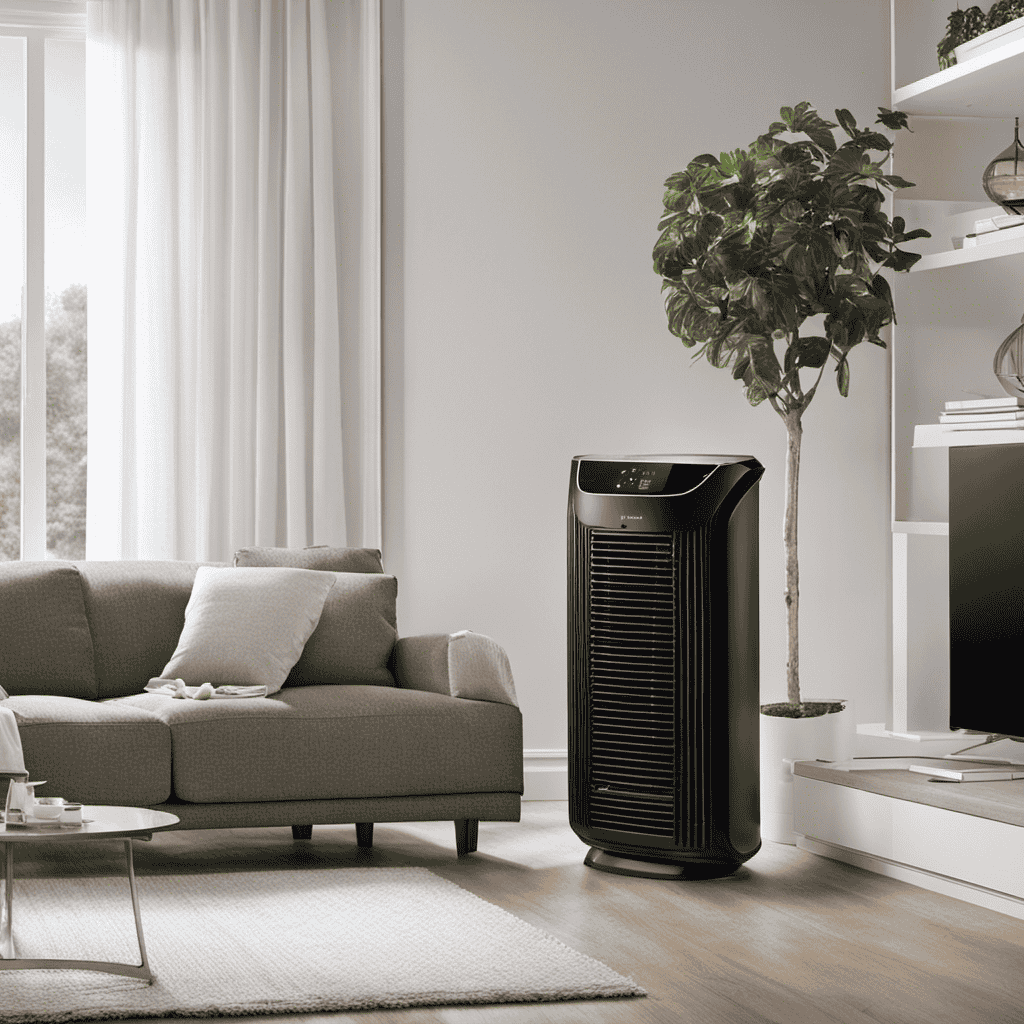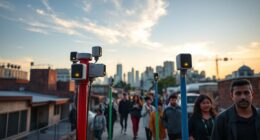As a strong supporter of clean air, I have conducted thorough research on the top air purifiers for Covid. With so many choices available, it can be daunting to determine which one will offer the protection we require.
That’s why I’ve compiled this informative article to help you understand the importance of air purifiers, the different types available, and the key features to look for.
Let’s dive in and find the perfect air purifier to keep you safe during these challenging times.
Key Takeaways
- Proper ventilation and air purifiers are crucial in preventing the spread of Covid-19.
- Different types of air purifiers, such as HEPA filter, activated carbon, and UV-C light purifiers, work to filter and capture harmful particles, including viruses.
- Key features to look for in an air purifier for Covid include effective virus filtration, air circulation capacity, HEPA filters with high efficiency, and a high Clean Air Delivery Rate (CADR) and Air Changes Per Hour (ACH).
- HEPA filters are highly effective in removing Covid particles, capturing 99.97% of particles as small as 0.3 microns, and significantly reducing the concentration of airborne viruses. Incorporating UV-C light technology in air purifiers further enhances virus removal efficiency.
Understanding the Importance of Air Purifiers for Covid
Understanding the importance of air purifiers for Covid is crucial in protecting ourselves and others from the virus. One key aspect of preventing the spread of Covid-19 is ensuring proper ventilation. Adequate ventilation helps to dilute and remove virus particles from the air, reducing the risk of transmission.
Air purifiers play a vital role in improving ventilation in public spaces, such as offices, schools, and hospitals. These devices help to filter and capture harmful particles, including viruses and bacteria, thereby reducing the concentration of pathogens in the air.
By incorporating air purifiers in public spaces, we can create safer environments and minimize the risk of viral transmission.
In the subsequent section, we will explore the different types of air purifiers and how they work to provide effective protection against Covid-19.
Different Types of Air Purifiers and How They Work
Looking for an air purifier that suits your needs? Let’s explore the different types and how they work. Air purifiers are essential for maintaining clean and healthy indoor air, especially during times like the COVID-19 pandemic. There are several types of air purifiers available, each with its own unique features and benefits.
One common type is the HEPA (High-Efficiency Particulate Air) filter purifier, which uses a dense filter to trap and remove airborne particles, such as dust, pollen, and pet dander. Another type is the activated carbon purifier, which utilizes a carbon filter to adsorb odors, chemicals, and gases. UV-C light purifiers use ultraviolet light to kill bacteria and viruses, including COVID-19.
To help you understand the differences between these types, here is a table highlighting their key features:
| Air Purifier Type | Key Features |
|---|---|
| HEPA Filter Purifier | Traps and removes airborne particles |
| Activated Carbon Purifier | Adsorbs odors, chemicals, and gases |
| UV-C Light Purifier | Kills bacteria and viruses |
When it comes to air purifier maintenance, it’s important to regularly clean or replace the filters according to the manufacturer’s instructions. Additionally, proper placement of the air purifier is crucial for maximum effectiveness. Position it in a central location, away from obstructions, and ensure that the air flow is not blocked.
Key Features to Look for in an Air Purifier for Covid
When it comes to choosing an air purifier for Covid, two key features to consider are effective virus filtration and air circulation capacity.
Effective virus filtration is important as it ensures that the purifier can capture and remove tiny airborne particles, including viruses, from the air.
Air circulation capacity is also crucial as it determines how quickly and effectively the purifier can clean and circulate the air in a given space, helping to reduce the risk of viral transmission.
Effective Virus Filtration
An air purifier with a HEPA filter is effective at trapping and removing viruses, including COVID-19. HEPA filters can capture particles as small as 0.3 microns with an efficiency of 99.97%.
Here are two reasons why air purifiers with HEPA filters are efficient virus removal methods:
-
High-Efficiency Particulate Air (HEPA) filters have a dense network of fibers that can trap small particles, including viruses. The fibers in HEPA filters create multiple layers, ensuring that even tiny viruses cannot pass through. HEPA filters have a large surface area, allowing them to capture more viruses and other airborne particles.
-
HEPA filters are designed to remove particles from the air continuously, ensuring that the virus particles do not recirculate. Air purifiers with HEPA filters draw in contaminated air, trapping viruses and other pollutants, and then release clean air back into the room. Continuous filtration helps reduce the concentration of viruses in the air, potentially lowering the risk of transmission.
Air Circulation Capacity
Air purifiers with HEPA filters have a high capacity for circulating and purifying the air in a room. These filters are designed to capture particles as small as 0.3 micrometers, including pollen, dust mites, pet dander, and even some bacteria and viruses. The effectiveness of an air purifier depends on its performance in terms of air circulation and filtration rate. The table below highlights some key factors to consider when evaluating an air purifier’s performance:
| Performance Factors | Description |
|---|---|
| Clean Air Delivery Rate (CADR) | Measures the volume of clean air produced by the purifier in cubic feet per minute (CFM) |
| Air Changes Per Hour (ACH) | Indicates how many times the air in a room is completely filtered in an hour |
| Filter Replacement Frequency | Determines how often the filters need to be replaced for optimal performance |
| Noise Level | Specifies the amount of noise produced by the purifier during operation |
| Energy Efficiency | Indicates the energy consumption of the purifier |
Effectiveness of HEPA Filters in Removing Covid Particles
You’ll find that HEPA filters are highly effective in removing Covid particles from the air. They have been proven to capture 99.97% of particles as small as 0.3 microns, including viruses.
Here are some reasons why HEPA filters are the top choice for air purifiers:
-
HEPA filter efficiency:
-
HEPA filters are designed to trap tiny particles, such as viruses and bacteria, ensuring cleaner air.
-
The high efficiency of HEPA filters ensures that even the smallest airborne particles are captured, reducing the risk of Covid transmission.
-
Air purifier performance:
-
Air purifiers equipped with HEPA filters can effectively remove Covid particles from indoor spaces, improving air quality and reducing the spread of the virus.
-
Studies have shown that the use of HEPA filters in air purifiers can significantly reduce the concentration of airborne viruses, including Covid.
With their proven efficiency and performance, HEPA filters are a reliable choice for removing Covid particles from the air and creating a safer indoor environment.
The Role of UV-C Light Technology in Air Purifiers for Covid
UV-C light technology plays a crucial role in enhancing the effectiveness of air purifiers against Covid particles. This technology utilizes short-wavelength ultraviolet light to target and deactivate harmful microorganisms, including viruses like Covid-19. By incorporating UV-C light into air purifiers, the air purification efficiency is significantly improved, providing an added layer of protection against airborne pathogens.
To better understand the impact of UV-C light technology on air purifiers, let’s consider the following table:
| UV-C Light Technology | Air Purification Efficiency |
|---|---|
| Kills viruses | High |
| Reduces bacteria | High |
| Eliminates mold | High |
As demonstrated in the table, UV-C light technology effectively kills viruses, reduces bacteria, and eliminates mold, thereby enhancing the overall air purification efficiency.
Considering the importance of UV-C light technology in air purifiers, it is crucial to also take into account other factors such as room size and air purifier coverage.
Considerations for Room Size and Air Purifier Coverage
When it comes to choosing an air purifier, it’s important to consider the size of the room you’re planning to use it in. Optimal room size plays a crucial role in the effectiveness of air purification.
Additionally, understanding how air purifiers work and the factors that contribute to effective air purification can help you make an informed decision on which one to purchase for your specific needs.
Optimal Room Size
The optimal room size for an air purifier depends on the square footage of the space you’re looking to purify. It’s important to choose an air purifier with the right capacity to effectively clean the air in your room.
Here are some considerations when determining the optimal room size for an air purifier:
-
Room Size:
-
Small Rooms (up to 300 square feet):
-
Air purifiers with a capacity of 100-200 CADR (Clean Air Delivery Rate) are suitable for small rooms, such as bedrooms or home offices.
-
These air purifiers can effectively remove allergens, dust, and pet dander from the air in smaller spaces.
-
Large Rooms (up to 600 square feet):
-
For larger rooms, it’s recommended to choose an air purifier with a capacity of 200-400 CADR.
-
These air purifiers have a higher airflow rate and can efficiently clean the air in living rooms or larger open spaces.
Remember to consider the room size when selecting an air purifier to ensure optimal air purification for your space.
Effective Air Purification
To effectively purify the air, it’s important to consider factors such as room size and air purifier capacity.
When it comes to air purifier effectiveness, regular maintenance is key. Keeping the filters clean and replacing them as recommended by the manufacturer ensures optimal performance.
Additionally, checking the air purifier’s CADR (Clean Air Delivery Rate) is crucial to determine how efficiently it can remove pollutants from the air. A higher CADR means the air purifier can clean a larger volume of air in a shorter amount of time.
It’s also important to consider the type of air purifier that suits your needs, whether it’s a HEPA filter or an activated carbon filter.
Regular maintenance and choosing the right type of air purifier will ensure that you are breathing clean and healthy air.
Noise Levels and Energy Efficiency in Covid Air Purifiers
You should consider the noise levels and energy efficiency of Covid air purifiers before making a purchase.
When it comes to noise levels, it’s important to find a purifier that operates quietly, especially if you plan to use it in your bedroom or office. Look for models that have noise levels below 50 decibels, which is equivalent to a quiet conversation.
On the other hand, energy efficiency is crucial for keeping your electricity bills in check. Opt for purifiers with Energy Star certification, as they are designed to consume less energy without compromising performance. These purifiers use advanced technologies like low-power fans and efficient filters to provide clean air while minimizing energy consumption.
Additional Air Purifier Features to Enhance Covid Protection
Consider adding features to enhance the protection against Covid when choosing an air purifier. In addition to noise levels and energy efficiency, there are other important factors to consider. Features such as HEPA filters, UV-C light, and smart technology can provide added benefits in terms of air purification and monitoring.
Below is a table outlining some of these additional features and their potential benefits:
| Feature | Benefit |
|---|---|
| HEPA Filters | Removes 99.97% of particles as small as 0.3 microns |
| UV-C Light | Kills germs and viruses, including Covid-19 |
| Smart Technology | Monitors air quality and adjusts settings automatically |
| Air Quality Indicator | Provides real-time feedback on air quality |
It’s also important to consider the maintenance requirements and price range of the air purifier. Regular filter replacements and overall maintenance are necessary to ensure optimal performance. Additionally, the price range of air purifiers can vary greatly, so it’s important to find one that fits your budget while still providing the desired features for enhanced Covid protection.
Expert Recommendations for Choosing the Right Air Purifier for Covid
Now let’s dive into expert recommendations for choosing the right air purifier for Covid.
When it comes to effectively purifying the air and reducing the risk of virus transmission, there are a few key factors to consider.
-
UV-C Light Technology: Look for air purifiers that feature UV-C light technology. This type of light can deactivate viruses, including the coronavirus, making it a powerful tool in fighting Covid.
-
Noise Levels: Consider the noise levels of the air purifier. Since it will likely be running for extended periods, especially in shared spaces, you’ll want to choose one that operates quietly to avoid disruptions.
-
Energy Efficiency: Check the energy efficiency rating of the air purifier. Opting for a model that is energy-efficient not only helps reduce your carbon footprint but also saves you money on energy bills.
Frequently Asked Questions
Can Air Purifiers Completely Eliminate the Risk of Contracting Covid-19?
Air purifiers can reduce the risk of contracting Covid-19 by filtering out airborne particles. However, they cannot completely eliminate the risk. To ensure effectiveness, look for purifiers with HEPA filters and consider room size when making recommendations.
How Often Should the Filters in an Air Purifier Be Replaced?
Air purifier maintenance is crucial for optimal performance. Regularly replacing filters is essential to ensure clean air. The lifespan of filters varies, but generally they should be replaced every 6-12 months for maximum effectiveness.
Can Air Purifiers Effectively Remove Other Airborne Viruses and Bacteria?
Air purifiers can effectively remove common cold viruses and bacteria, providing a healthier environment. Hospitals benefit from their use, reducing the spread of airborne illnesses. It’s important to choose a purifier that suits your needs.
Are There Any Potential Health Risks Associated With Using an Air Purifier?
There may be potential health risks associated with using an air purifier. It’s important to consider the effectiveness of air purifiers in removing viruses and bacteria, but also be aware of any possible negative effects on indoor air quality and respiratory health.
Can Air Purifiers Help Reduce the Transmission of Covid-19 in Shared Spaces Such as Offices or Classrooms?
Air purifiers with HEPA filters can help reduce the transmission of Covid-19 in shared spaces. When choosing one, consider factors like room size, air exchange rate, and CADR.
Conclusion
In conclusion, choosing the right air purifier for Covid is crucial in creating a safe and healthy environment.
As I was researching, I came across a powerful metaphor that resonated with me. An air purifier can be compared to a shield, protecting us from the invisible enemy, Covid particles.
Just like a shield, it should have key features like HEPA filters and UV-C light technology to effectively remove these particles.
By considering room size, noise levels, and energy efficiency, we can find the perfect shield to enhance our Covid protection.
Remember, knowledge is our greatest weapon in this battle, so let’s choose wisely.



